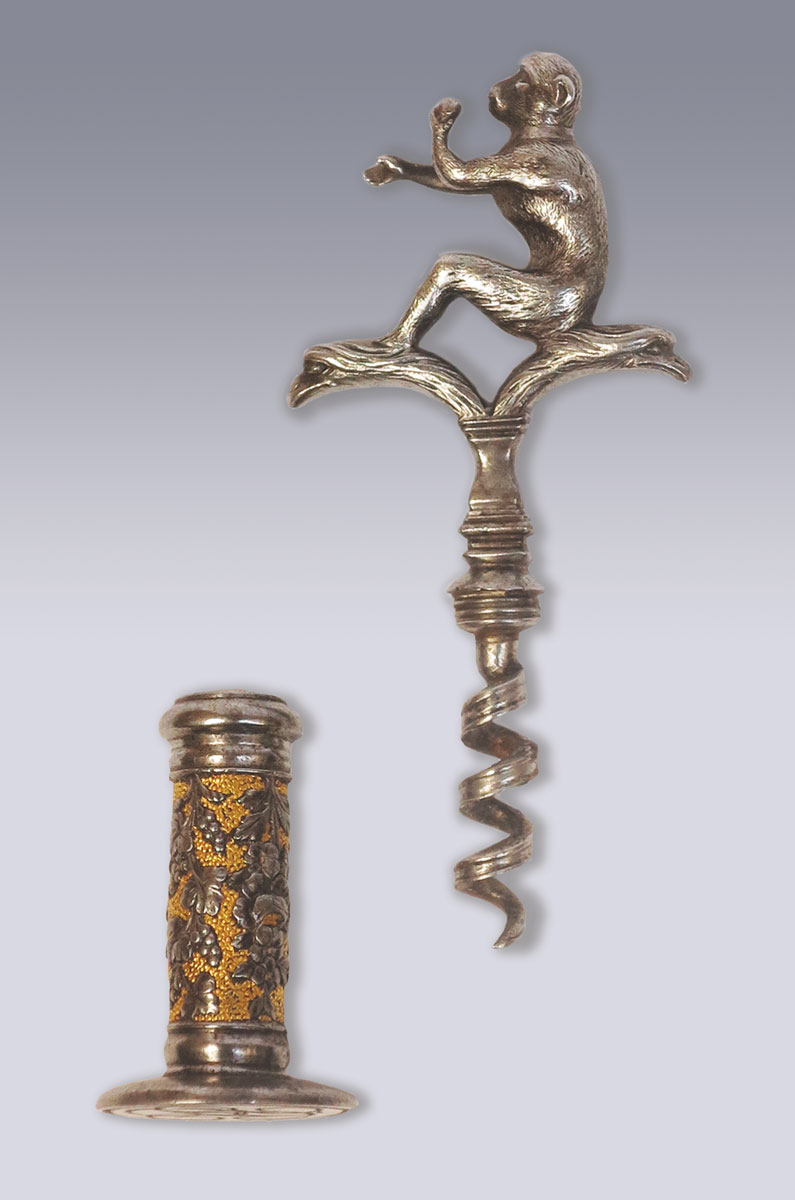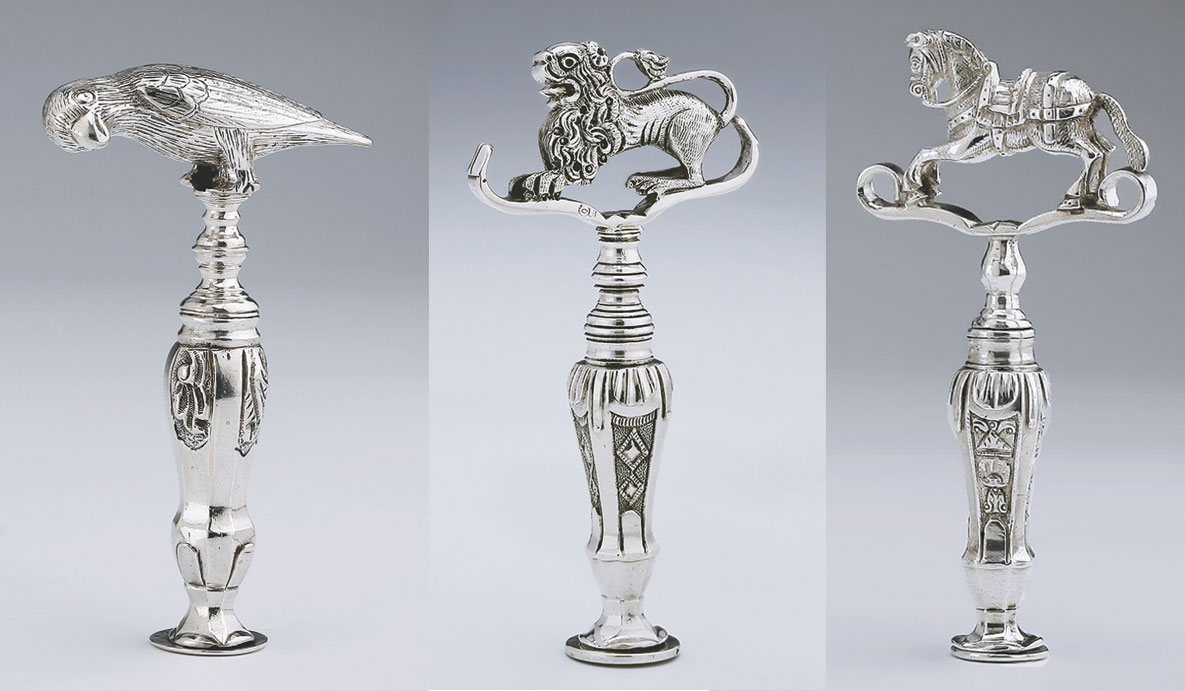In Search of an Opening
Writer Leslie Gilbert ElmanPocket corkscrews were a practical accessory for the well-dressed man or woman.
You never know when you might be called upon to uncork a bottle of wine. If you were a gentleman or lady of the 18th century, you might have carried a corkscrew in your pocket or purse at all times just to be prepared for such an eventuality.
The feel of a silver pocket corkscrew in the hand is satisfying and comforting; more convivial than a pocket knife and nearly as useful. They were cherished by owners and coveted by criminals. Indeed, newspapers of the 18th and early 19th century regularly carried classified ads asking for the return of stolen corkscrews “no questions asked.” Thieves in Cambridge, England, in 1733 received the “sentence of death” for robbing a woman of a silver corkscrew and other personal items. (The same police blotter reported someone merely receiving a whipping for stealing a gun!) A gang that broke into a London church in 1819 drank six bottles of communion wine and left a note that read “You are rich and we are poor/The wine is good! We’ll come for more!!” They were arrested when police found the church’s silver corkscrew in their possession.
Like The Adventures of a Watch and The Adventures of a Black Coat, a 1775 book titled The Adventures of a Corkscrew was a moralistic little tale written for adults and told from the title character’s point of view. Corkscrews were so ubiquitous and such an integral part of daily life, if they could speak they might well have been in a position to pass judgment on what the book termed the “vices, follies, and manners” of the age.
An amusing anecdote from the 18th century recalls a gathering of 10 clergymen, none of whom carried a prayer book with him, but each of whom reached into his pocket and produced a corkscrew when one was required. The story is even funnier when you consider that the first English patent for a corkscrew was given in 1795 to the Reverend Samuel Henshall, rector of London’s Bow Church.
Henshall didn’t invent the corkscrew; his design simply added a button-style stopper that prevented the corkscrew from being driven too far into the bottle and made it easier to break the cork’s seal. More design patents followed, including several in the 1870s for inexpensive wire corkscrews (some made for left-handed use) designed by William Rockwell Clough of Newark, New Jersey.
Clough’s designs were intended not only for uncorking wine and spirits, but also for opening cork-sealed bottles of household items such as perfume and patent medicine. By its own estimation, the Rockwell Clough company, which later moved to Alton, New Hampshire, produced as many as 60 million of these a year around the turn of the last century.
Carl Wienke of Rostock, Germany, filed patents in 1882 and 1883 for his folding “lever corkscrew.” You might know it as the “waiter’s friend,” and if you’ve ever ordered wine in a restaurant, the waiter almost certainly used a corkscrew based on Wienke’s design to open the bottle. The common two-handled cork extractor was patented by Dominick Rosati of Chicago in 1928. And the list goes on.
Christie’s London has devoted entire auction sales to corkscrews, from polished silver examples bearing the monograms of their original owners to iron wing-nut or double-lever implements that look more suited to the workshop than the butler’s pantry. While the more refined examples with provenance might fetch thousands of dollars each, mass-produced corkscrews can be had for far less and may be sold with several grouped in a single lot.
Earlier this year, Dutch antique silver dealer A. Aardewerk offered for sale three silver corkscrews from the mid-18th century, all made by Amsterdam silversmith Hendrik Smook. One is topped with a parrot, one with a lion and one with a rocking horse. (Amsterdam’s Rijksmuseum has a similar rocking horse kurkentrekker by Smook in its collection.)
Designed to open early-style onion-shaped wine bottles with short corks, the shanks of these corkscrews are quite short. The steel helix, or “worm,” fits into the top of the silver body for safety when not in use. The flattened base of the body serves as a seal and a pipe tamper. It unscrews to reveal a pointed end that would have been used as a pipe cleaner and/or a toothpick. This design was common among corkscrews of the period, and Hendrik Smook specialized in making them.
While one wouldn’t put any of these antique corkscrews to work today, they’re fascinating little examples of engineering and inventiveness. It might be true that building a better mousetrap would have the world beating a path to your door, but building a better corkscrew probably would have won you more friends.
Leslie Gilbert Elman is the author of Weird But True: 200 Astounding, Outrageous and Totally Off the Wall Facts. She writes about antiques and other subjects for Design NJ.


